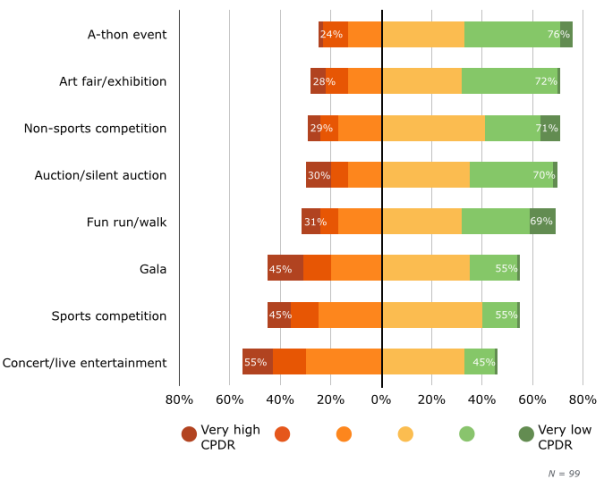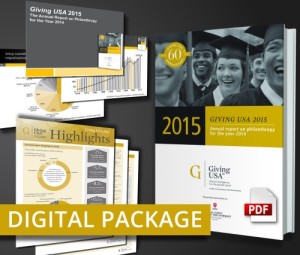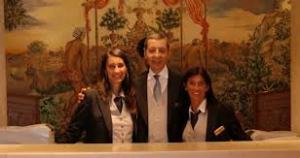 One of the clients I’ve been working with for a while is located in Bloomington, Indiana, which is where I met Rachael Jones. Rachael is a transgender woman who used to own “Rachael’s Cafe”. Unfortunately, after eight years of serving coffee, food and a side of acceptance, Rachael closed her doors last month. During my last visit, the executive director handed me a copy of the June 29th edition of The Herald-Times newspaper with a front page story headline that read “Downtown gathering place closes after 8 years of fostering acceptance“. He shared the newspaper story with me because he knew I had wanted to be there for Rachael’s last day, but I just couldn’t make it work with my travel schedule.
One of the clients I’ve been working with for a while is located in Bloomington, Indiana, which is where I met Rachael Jones. Rachael is a transgender woman who used to own “Rachael’s Cafe”. Unfortunately, after eight years of serving coffee, food and a side of acceptance, Rachael closed her doors last month. During my last visit, the executive director handed me a copy of the June 29th edition of The Herald-Times newspaper with a front page story headline that read “Downtown gathering place closes after 8 years of fostering acceptance“. He shared the newspaper story with me because he knew I had wanted to be there for Rachael’s last day, but I just couldn’t make it work with my travel schedule.
So, what does any of this have to do with non-profits or fundraising? Well, tucked away inside of Kurt Christian’s front page article, there was an amazing story Rachael told that I think is applicable to every fundraising professional’s life. And I want to share it for two reasons:
- To pay tribute to an amazing human — Rachael Jones (someone I greatly admire and wish I had half her courage)
- To help new fundraising professionals understand something very important about their donors
In the article, Rachael tells the newspaper reporter about a life lesson she learned from one of the construction workers who had been working on the renovation of the cafe prior to it opening in 2007. After coming out to the crew as being a transgender woman, one of the guys asked Rachael if she would consider judging a chili cook-off event in a small rural town south of Bloomington, Indiana.
Rachael was hesitant to accept the invitation because:
- small town America isn’t ready for a transgender woman
- people would judge her
- it might not be safe
Or so she thought.
Thanks to the insistence of the construction worker who had invited her, Rachael showed up and judged the chili cook-off. In hindsight, here is what she said about this life changing event:
“I went, and I was so sure I was going to be judged. But these people were wonderful. It was a beautiful experience, and I had a lot of fun, and I learned a great lesson. I had put them in a box that didn’t exist; they didn’t belong in that box.”
I just love how Rachael framed her experience. I’ve been thinking about these words for weeks during countless hours of windshield time driving from client to client. The more I think about these words, the more I wondered “how many people have I put in boxes during my life?”
It was during one of these contemplative moments that another more interesting question bubbled to the forefront:
“How many donors have I put in a box that didn’t exist and they didn’t belong in?”
I fear that I’ve done it a lot, and I’ve justified it all in the name of “segmenting donors lists“.
Segmenting donors is a common practice in most fundraising shops, and it is a best practice. Not only does it keep you from asking people to attend events who hate going to those type of fundraisers, but it also keeps you from sending mail to people who prefer email communications. When done right, you are categorizing donors based on their feedback and their wishes.
HOWEVER . . . is it possible to take the practice of donor segmentation too far? Could we be creating boxes that shouldn’t exist? I’m inclined to think so. Here are a few confessions I’ll make when it comes to constructing boxes for donors that I probably shouldn’t have:
- I’ve looked at a list of donors and said something like: “They wouldn’t be interested in supporting THAT program“
- Prior to a stewardship visit, I’ve decided what to share with the donor based on what I thought they were interested in hearing
- I’ve excluded donors from receiving certain solicitations because I was fearful they might make a contribution, which could undercut another solicitation for a different project
In this era of so-called “Donor-Centered Fundraising,” shouldn’t we take a page out of Rachael Jones’ book by engaging our donors in more exploratory conversations and do a little less segmenting and box building?
I’m interested in what you have to say about this question. Please share your thoughts and experiences in the comment box below.
Here’s to your health! (And congrats to Rachael on eight great years and for being an inspiration to us all)
Erik Anderson
Founder & President, The Healthy Non-Profit LLC
www.thehealthynonprofit.com
erik@thehealthynonprofit.com
http://twitter.com/#!/eanderson847
http://www.facebook.com/eanderson847
http://www.linkedin.com/in/erikanderson847

 The ease of technology now reaches almost all aspects of life, even fundraising. With the help of social media and email and texting, nonprofits are now able to raise money with the click of a button. This shift has been hugely beneficial.
The ease of technology now reaches almost all aspects of life, even fundraising. With the help of social media and email and texting, nonprofits are now able to raise money with the click of a button. This shift has been hugely beneficial. Gretchen Barry, Director of Marketing — Gretchen has been a leader in corporate communications and marketing for 20+ years. Gretchen has published numerous articles related to charitable giving and is a passionate advocate for public schools. Gretchen has donated her time to numerous causes including Relay for Life, Girls on the Run, Rebuilding Together, and just recently became involved with the local land trust. Gretchen graduated from the University of Nevada with a degree in English literature.
Gretchen Barry, Director of Marketing — Gretchen has been a leader in corporate communications and marketing for 20+ years. Gretchen has published numerous articles related to charitable giving and is a passionate advocate for public schools. Gretchen has donated her time to numerous causes including Relay for Life, Girls on the Run, Rebuilding Together, and just recently became involved with the local land trust. Gretchen graduated from the University of Nevada with a degree in English literature. My neighbor owns and operates a home business, and last week he received a letter from a local non-profit organization asking him to sponsor a
My neighbor owns and operates a home business, and last week he received a letter from a local non-profit organization asking him to sponsor a  I belong to a professional association and recently agreed to join their nominating committee to help the board of directors fill a few expiring board terms. This volunteer experience has made “board recruitment” top of mind for me over the last few weeks. I also can’t stop thinking about the various organizational structures and strategies/approaches to board recruitment. When this happens to me, I know there must be a blog post brewing.
I belong to a professional association and recently agreed to join their nominating committee to help the board of directors fill a few expiring board terms. This volunteer experience has made “board recruitment” top of mind for me over the last few weeks. I also can’t stop thinking about the various organizational structures and strategies/approaches to board recruitment. When this happens to me, I know there must be a blog post brewing. Without a good list of donors, your year-end mail appeal will fall very flat and likely not raise very much money. Some direct mail experts, such as the folks at
Without a good list of donors, your year-end mail appeal will fall very flat and likely not raise very much money. Some direct mail experts, such as the folks at  My husband is a sales and use tax accountant for a large multi-national corporation, and I am a small entrepreneur who runs a non-profit consulting practice. We operate in two very different worlds, but every once in a great while there is overlap. A few months ago, John sent me an email about a sales and use tax ruling in the State of Oklahoma that very much applied to non-profit organizations that run charity auctions, and it got me thinking about the ever changing complex and overlapping legal structure in our country and the status of your non-profit organization.
My husband is a sales and use tax accountant for a large multi-national corporation, and I am a small entrepreneur who runs a non-profit consulting practice. We operate in two very different worlds, but every once in a great while there is overlap. A few months ago, John sent me an email about a sales and use tax ruling in the State of Oklahoma that very much applied to non-profit organizations that run charity auctions, and it got me thinking about the ever changing complex and overlapping legal structure in our country and the status of your non-profit organization. Last week I wrote a post titled “
Last week I wrote a post titled “ In other words, most of us run at least one special event as part of our comprehensive resource development program. While this was foreseeable and expected, what was surprising to me was that different size non-profit organizations get more bang-for-their-buck from different types of events. And what floored me was that regardless of organizational size most respondents reported that “fun runs and walks” universally receive a high return on investment (ROI).
In other words, most of us run at least one special event as part of our comprehensive resource development program. While this was foreseeable and expected, what was surprising to me was that different size non-profit organizations get more bang-for-their-buck from different types of events. And what floored me was that regardless of organizational size most respondents reported that “fun runs and walks” universally receive a high return on investment (ROI).
 It is June and you know what that means … The Indiana University Lilly Family School of Philanthropy and the fundraising professionals from
It is June and you know what that means … The Indiana University Lilly Family School of Philanthropy and the fundraising professionals from  Before you dive into lots of other chatter, you may want to purchase this year’s Giving USA annual report (or at least download the free whitepaper highlights).
Before you dive into lots of other chatter, you may want to purchase this year’s Giving USA annual report (or at least download the free whitepaper highlights).  In recent months, I’ve been reminded of the power of donor databases and Customer Relationship Management (CRM) systems. For-profit corporations grasped the importance of gathering customer data a long time ago, which is why they invested in these systems before many non-profit organizations started doing so. I will divide the remainder of this blog post up into sections and share a few personal stories about my experiences in recent months. At the end of this post, I’ll share a few resources to help you with your search.
In recent months, I’ve been reminded of the power of donor databases and Customer Relationship Management (CRM) systems. For-profit corporations grasped the importance of gathering customer data a long time ago, which is why they invested in these systems before many non-profit organizations started doing so. I will divide the remainder of this blog post up into sections and share a few personal stories about my experiences in recent months. At the end of this post, I’ll share a few resources to help you with your search.![IMG_20150414_215128628[1]](https://donordreams.files.wordpress.com/2015/06/img_20150414_2151286281.jpg?w=169) My husband and I like to take cruises every other year and visit fun places. Over the years we’ve traveled to the Caribbean, Greek Islands, Scandinavian peninsula (and St. Petersburg, Russia), Alaska, and recently the Panama Canal (and Central America).
My husband and I like to take cruises every other year and visit fun places. Over the years we’ve traveled to the Caribbean, Greek Islands, Scandinavian peninsula (and St. Petersburg, Russia), Alaska, and recently the Panama Canal (and Central America).![IMG_20150414_191147999_HDR[1]](https://donordreams.files.wordpress.com/2015/06/img_20150414_191147999_hdr1.jpg?w=300) While some people think this level of interaction is creepy, I believe the vast major of people (including myself) find this comforting and convenient. I prefer to think of it differently. I’m in a 10 year relationship with Princess Cruises, and they better know my preferences just like my husband better know my eye color.
While some people think this level of interaction is creepy, I believe the vast major of people (including myself) find this comforting and convenient. I prefer to think of it differently. I’m in a 10 year relationship with Princess Cruises, and they better know my preferences just like my husband better know my eye color. When I returned from my cruise at the end of April, I immediately hit the road on a business trip. Whenever I visit this one particular client, I always stay at the same hotel — Marriott SpringHill Suites.
When I returned from my cruise at the end of April, I immediately hit the road on a business trip. Whenever I visit this one particular client, I always stay at the same hotel — Marriott SpringHill Suites.